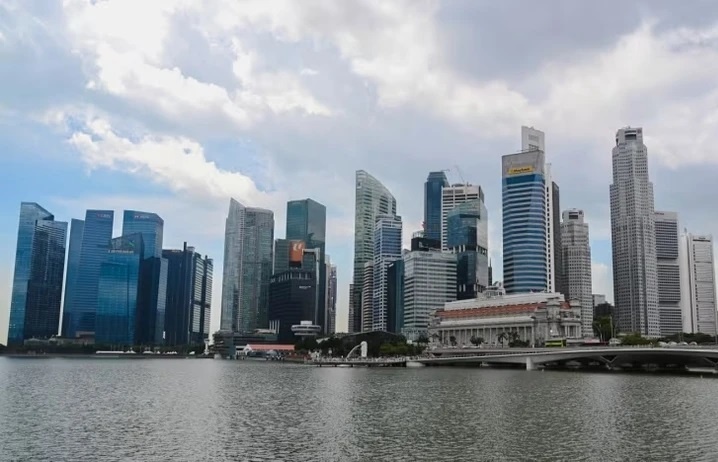Local companies cry foul over VAT
Vietnamese companies have expressed rage over the draft guidelines on the value added tax (VAT) on services and commodities for export.
The guidelines are due to be released by the end of this month, according to Nguyen Thi Cuc, deputy head of the General Department of Taxation (GDT).
Cuc said the VAT rate on services and commodities for export would “remain at zero per cent”.
But several enterprises dispute this and claim the guidelines remain unclear and that they are still required to pay the 10 per cent VAT on commodities and services for export.
The deputy director of a law firm, who preferred to remain anonymous, said his firm still had to pay the 10 per cent VAT on consulting services provided to foreigners outside of Vietnam.
But Cuc said the charge was appropriate.
“In this case they still have to pay 10 per cent VAT,” she said, “since the law firm has an office in Vietnam and collects materials in Vietnam to provide consultative services abroad.”
“To pay zero per cent, enterprises must present evidence and documents proving that the services are for export.”
Bui Bich Loan, head of the accounting and financial board of the Vietnam National Shipping Lines Corporation, said the tax agencies remained confused in their definitions of what services and commodities are used for export.
“Currently, shipping firms have to pay 10 per cent for insurance services, on fuels and on international transport,” she said, adding that these services should not attract VAT.
Cuc agreed that in reality, tax agencies are confused about what percentage of fuel is used for international transport
“It is also very difficult to know the percentage of insurance on domestic and international transport,” she said.
“It is a headache for tax agencies, as some shipping firms use 80 per cent of ships for international transport, while others use just 50 per cent and that rate changes from month to month.”
Ngo Bac Ha, deputy general director of the Hai Phong port said: “Presently the commodity delivery and loading services on commodities for export or for foreign ships remains at 10 per cent instead of zero per cent VAT”.
Cuc said the release of the guidelines would clarify matters and include detailed definitions of what commodities and services were for export.
“Vietnam is still in a transitional period in reforming and modernising its tax system,” she said. “To manage and define what commodities and services are for export is not an easy task for tax agencies; while trade fraudulence is ever-increasing,” she said.
Cuc said the VAT rate on services and commodities for export would “remain at zero per cent”.
But several enterprises dispute this and claim the guidelines remain unclear and that they are still required to pay the 10 per cent VAT on commodities and services for export.
The deputy director of a law firm, who preferred to remain anonymous, said his firm still had to pay the 10 per cent VAT on consulting services provided to foreigners outside of Vietnam.
But Cuc said the charge was appropriate.
“In this case they still have to pay 10 per cent VAT,” she said, “since the law firm has an office in Vietnam and collects materials in Vietnam to provide consultative services abroad.”
“To pay zero per cent, enterprises must present evidence and documents proving that the services are for export.”
Bui Bich Loan, head of the accounting and financial board of the Vietnam National Shipping Lines Corporation, said the tax agencies remained confused in their definitions of what services and commodities are used for export.
“Currently, shipping firms have to pay 10 per cent for insurance services, on fuels and on international transport,” she said, adding that these services should not attract VAT.
Cuc agreed that in reality, tax agencies are confused about what percentage of fuel is used for international transport
“It is also very difficult to know the percentage of insurance on domestic and international transport,” she said.
“It is a headache for tax agencies, as some shipping firms use 80 per cent of ships for international transport, while others use just 50 per cent and that rate changes from month to month.”
Ngo Bac Ha, deputy general director of the Hai Phong port said: “Presently the commodity delivery and loading services on commodities for export or for foreign ships remains at 10 per cent instead of zero per cent VAT”.
Cuc said the release of the guidelines would clarify matters and include detailed definitions of what commodities and services were for export.
“Vietnam is still in a transitional period in reforming and modernising its tax system,” she said. “To manage and define what commodities and services are for export is not an easy task for tax agencies; while trade fraudulence is ever-increasing,” she said.
What the stars mean:
★ Poor ★ ★ Promising ★★★ Good ★★★★ Very good ★★★★★ Exceptional
 Tag:
Tag:
Related Contents
Latest News
More News
- The promotion of ESG via banking (November 21, 2024 | 09:32)
- Standard Chartered committed to Vietnam’s financial success (November 21, 2024 | 09:24)
- Full ESG adoption the priority for Agribank (November 21, 2024 | 09:07)
- Banks entice youth with tech advances (November 21, 2024 | 08:00)
- Banks shaping the future as business advisors (November 20, 2024 | 21:00)
- ESG represents a shift towards sustainability for banks (November 20, 2024 | 13:00)
- GGGI supports Vietcombank’s debut of $80 million green bonds (November 20, 2024 | 11:20)
- SHB and the ESG journey: creating social value in every step (November 19, 2024 | 15:00)
- Banking sector contributes to ESG, green growth, and sustainable development (November 19, 2024 | 14:42)
- ESG implementation in banking: from awareness to action (November 19, 2024 | 12:08)























 Mobile Version
Mobile Version